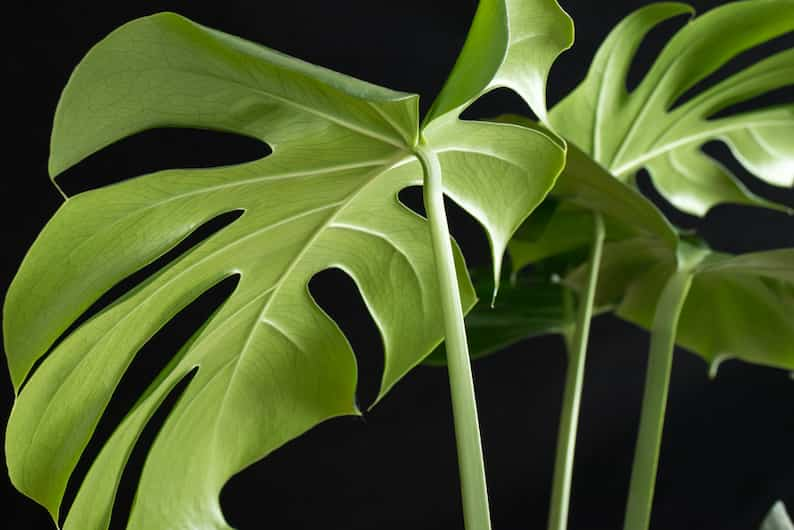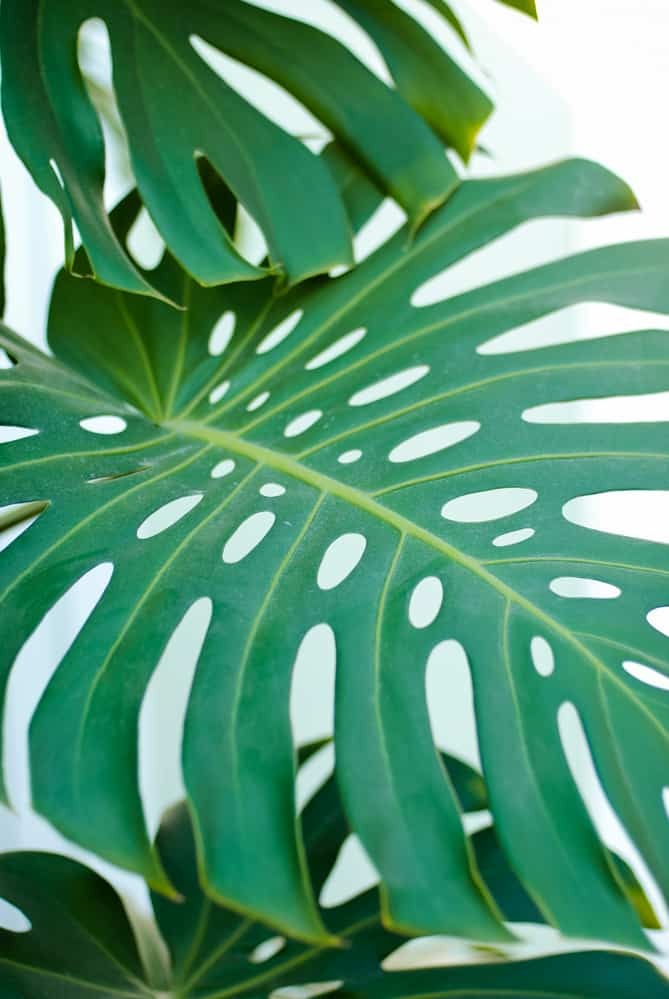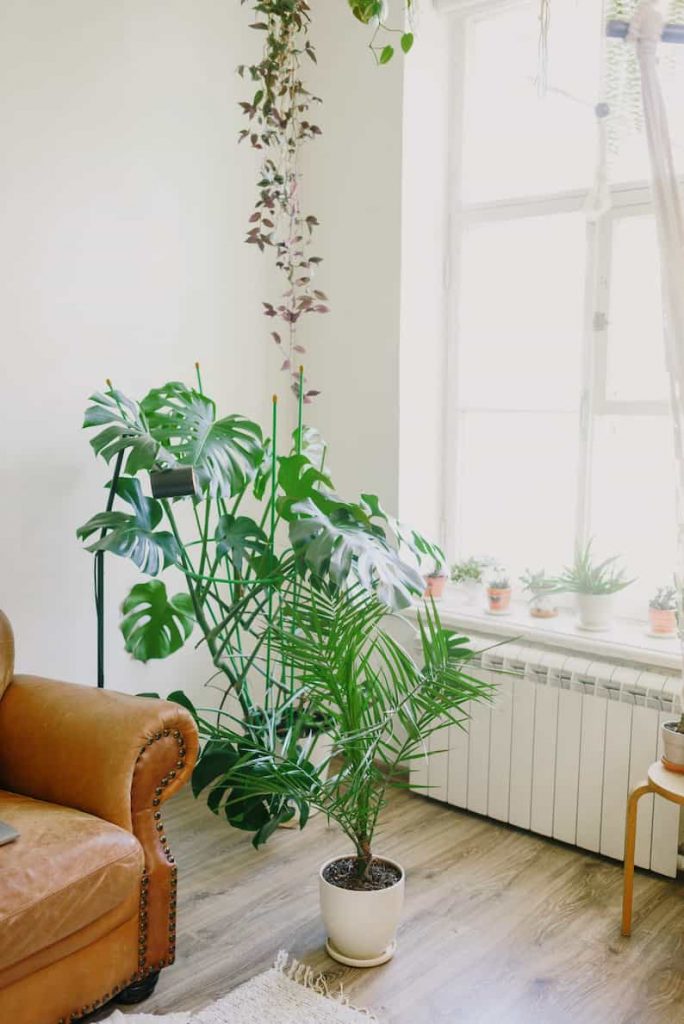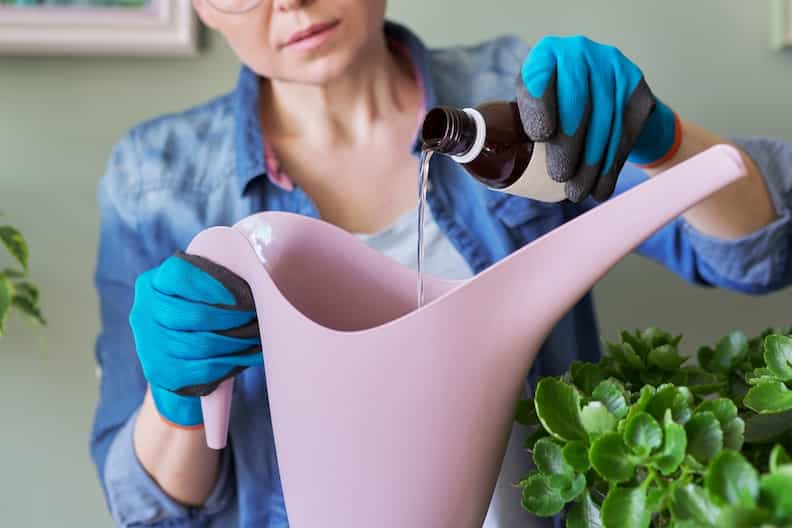Monstera plants are a great addition to any home. Not only do they add a splash of color, but they also have a unique look that is sure to get attention.
This means that it’s fair to wonder how long do Monstera plants live given how beautiful they are. After all, it would be ideal if they lived forever!
In this article, we will explore the lifespan of Monstera plants and offer some tips on how to keep them healthy for as long as possible!

Table of Contents
How long do Monstera plants live?
The Monstera plant blooms annually and is a perennial. Since they can live for more than 40 years, they are often considered heirloom plants. The plants’ long lifespan is, however, heavily dependent on growing in suitable conditions and receiving proper care.
One of the reasons Monstera plants have such a long lifespan is that they can go through periods of dormancy. When conditions are not ideal, the plant will stop growing and wait until conditions improve. This helps the plant conserve energy so it can live for many years.
There are nearly 50 species of the Monstera plant and they belong to the Araceae family. The most common type is the Monstera deliciosa, which is also known as the Swiss cheese plant or split-leaf philodendron.
These plants have adapted to strenuous jungle conditions and are very strong and resilient, which may contribute to their lifespans. Those famous holes in their leaves help the plant when there are heavy rains or strong winds and prevent ripping on the leaf surface.
They are also quite large and sturdy. Outdoors, Monstera plants can reach lengths of 70 feet long. However, indoors, you can expect your Monstera plant to reach 6 feet on average.
Related: How Long Do Monsteras Take To Grow (and How to Speed It Up)?
Can Monstera plants live forever?
Unfortunately, your Monstera won’t live forever, although given that they can live for more than 40 years, they do live for a long time. At some point, however, the plant will start to yellow and the leaves will drop off. Eventually, the stem will also turn brown and die.
While it is sad to see a plant die, you can take solace in knowing that your Monstera has had a long and full life! And with proper care, you can enjoy your plant for many years to come.
Another positive side is that you can always propagate your Monstera to create new plants. This is a great way to keep the plant alive in your home for generations. Monstera plants are propagated through clippings and can be rooted in water or soil.
Do indoor Monstera plants live longer than outdoor ones?
It is difficult to say definitively whether indoor or outdoor Monstera plants have a longer lifespan. It really depends on the conditions in which they are grown and how well they are cared for. A Monstera plant will die quickly if it is left outside in the extreme cold or left inside with a complete lack of light.
That said, it is generally easier to provide ideal conditions for an indoor plant than an outdoor one. Indoor plants are less likely to experience extreme weather conditions or pests. Therefore, it is possible that an indoor Monstera plant may have a slightly longer lifespan than an outdoor one.

Also, since Monstera prefers indirect sunlight, having it outdoors in direct light isn’t as ideal as it would be for other plants. Too much direct sunlight can cause the Monstera’s leaves to turn yellow and may even lead to leaf scorching.
If your Monstera plant lives outside and the temperature dips below 50 to 60 degrees Fahrenheit, it is important to bring the plant inside. Monstera plants are tropical plants and cannot tolerate cold weather.
If you live in a tropical zone and can keep your Monstera outdoors all year round, it is possible that your plant will have a longer lifespan than one that lives indoors. They also tend to grow taller in such conditions.
Related: Monstera Temperature Requirements: Too Hot or Too Cold?
How do I tell how old my Monstera is?
The age of your Monstera plant is determined by the shape of its leaves. A baby Monstera will have small heart-shaped leaves with no holes. Plants that are 1-3 years old have young fenestrations. Fully mature Monstera plants will have extremely large leaves that may even start to create a second or third set of fenestrations.
Another great way to gauge the age of a Monstera plant is by its height. A healthy Monstera will grow between 1 to 2 feet each year, or one-third of an inch each day. You can simply measure it to determine its age for the first 5 to 7 years.
If your Monstera plant is growing outside, it may get even longer and the age can be determined beyond 7 years of age.
How many years does Monstera grow?
Each Monstera grows for different lengths of time, largely based on its living conditions. However, if your plant has been living indoors, you can expect it to grow about six feet tall, which will take around three years, before it stays at the same height.
That said, there is no simple answer to the question of how long Monstera plants take to grow. The growth of your Monstera will not exactly mirror that of your friend, even if you both purchased it from the same place!
Monstera plants will continue to produce new leaves throughout their lifetime. However, the rate of growth will slow down as the plant matures. A young Monstera plant in the middle of the various Monstera growth stages will grow rapidly and produce new leaves every couple of weeks.

There are many factors that influence a plant’s growth. The components play a role in the overall health and growth of the organism, and they all provide for different needs. The Monstera’s vital needs include healthy drainage, healthy nutritious soil, the right amount of sunlight, and a consistent source of fresh water.
Let’s assume you meet each of these needs perfectly and consistently. Monstera plants grow about one to two feet each year. To break it down even further, that is a growth of 13.1 millimeters a day for the plant.
Wild relatives of Monstera are responsible for this growth. It is possible for these plants to reach heights of 70 feet or even higher when in their natural environment.
Do Monsteras go dormant?
Yes, Monstera plants will often go dormant in the winter months. This is normal for the plant, and there is no need to worry if your Monstera’s growth slows down or stops during those months. The plant will often shed some of its leaves during this time as well.
This happens because the Monstera plant tries to conserve its energy as best as possible to make it through the winter. This way, it won’t be shocked by the low temperatures and lack of sunlight.
The good news is that as soon as the temperature and sunlight start to increase again in spring, your Monstera will start to grow new leaves and vines!
If you want your Monstera to continue growing during the winter months, you can try moving it to a sunnier spot in your house. You could also try using grow lights to help simulate sunlight. This will increase your plant’s production speed.
It is important not to fertilize your Monstera during the winter months as this can cause the plant to go into shock. This is because the salts in the fertilizer will be more concentrated in the soil during winter due to the plant’s slower uptake of nutrients and water.
How to make your Monstera plant live longer
By treating your plant well and meeting its needs, you can help it to live a long and healthy life. Here are some tips on how to do this:
1. Make sure your Monstera has adequate light
Monstera plants need bright, indirect sunlight to thrive. If your plant is not getting enough light, it will start to produce smaller leaves. The leaves may also become yellow or have brown spots.
If it’s getting too much direct light, the plant may get sunburnt and the leaves will start to turn yellow or brown. You can try moving the plant or using a sheer curtain to filter the light if it’s too strong. This will extend its life by years.

2. Give your Monstera enough water
This tropical plant loves water but doesn’t like to sit in water, which can lead to root rot. Make sure to give it the perfect balance to extend its life. This means, when it comes to how often to water your Monstera, around once a week is a good, general rule, although using well-draining soil is also important.
Some people like to let the top inch of soil dry out completely between watering to make sure their plant isn’t sitting in water. This is especially given that overwatering your Monstera can have serious consequences for this plant.. You can use this method and check the moistness of the soil with your finger to decide when to water it.
3. Prune any yellow or dead leaves
Monstera plants need some pruning, although not super regularly. That said, it’s important to cut off any dead, yellowing, or diseased leaves. This helps protect against the spread of any diseases to the rest of the plant.
Prune during the growing season of your Monstera so that it will have time to recover before winter. Make sure to use well-washed or sanitized scissors.
4. Give fertilizer as needed
Fertilizers can help Monstera plants to grow faster, produce more leaves, and have a longer life. However, it is important not to over-fertilize as this can burn the roots and damage the plant.
Fertilize your Monstera in its growing months with an all-purpose fertilizer or a Monstera-specific fertilizer. Avoid fertilizing during the winter months because too much fertilizer may accumulate in the soil during this time.

5. Dust your plant regularly
Your plant’s leaves take in carbon dioxide from the air and convert it into oxygen and glucose through photosynthesis. However, dust can build up on the leaves and block this process from happening.
Long-term dust can cause your plant’s leaves to yellow and eventually die. It can also encourage pests and diseases on your Monstera such as spider mites to take up residence on your plant. To prevent this from happening, regularly dust your plant’s leaves with a soft cloth.
6. Keep an eye on humidity levels
These pants come from tropical environments, meaning that Monstera prefer humidity when it’s kept at a level between 60% and 80%. By gently misting the leaves once a week, you can help them to retain moisture and stay healthy.
You can also try placing your plant on a pebble tray or humidifier to increase the humidity around it. Just be sure to mist the leaves regularly as well, so they don’t dry out.
7. Repot your plant occasionally
If your Monstera plant isn’t repotted every couple of years, it will become rootbound. This makes it hard for the plant’s roots to absorb water or nutrients. Move your plant to a bigger pot to avoid this from happening.
When repotting your Monstera, you can increase the size of its pot by 2 to 3 inches every 2 years. This will give the plant enough room to grow without becoming rootbound. When repotting, be sure to use fresh potting mix and a clean pot to prevent diseases or pests.
